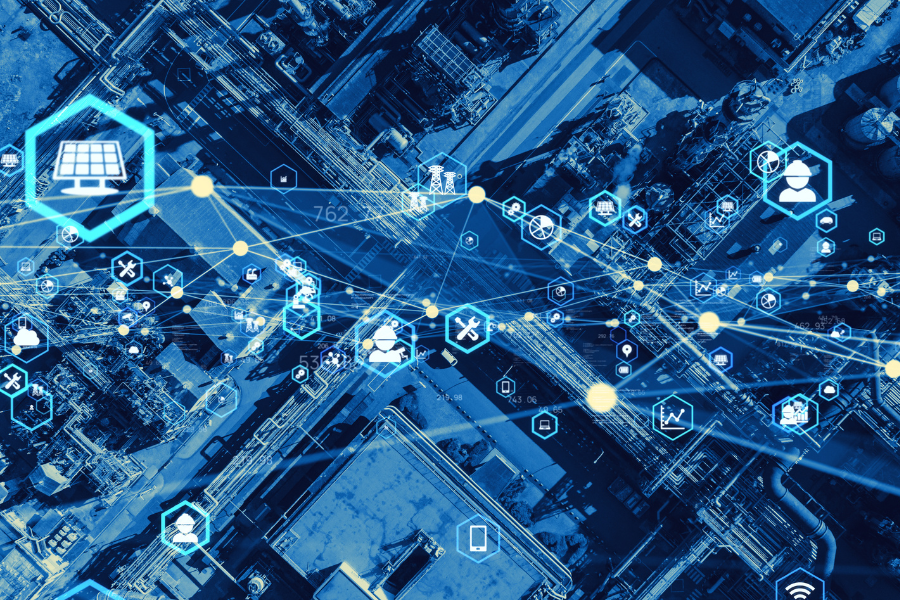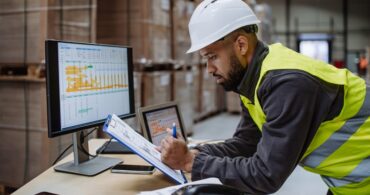The supply chain is one of the most crucial aspects of the consumer economy. It is also one of the most appropriately named because if any link breaks, the entire system could grind to a halt.
The supply chain includes every aspect of a product from the moment it is conceived to the time it arrives in the hands of a consumer. The manufacture and distribution of goods are crucial aspects of the supply chain, yet neither kicks off the process nor concludes it. As crucial as manufacturing and distribution companies are to the supply chain, they comprise just two of the links in a larger sequence.
The supply chain: manufacturer vs distributor
A bird’s-eye-view of the supply chain includes five primary steps in the creation and distribution of a product. They are planning, sourcing, manufacture distribution and customer service.
The first link in the supply chain is planning. The planning phase is when organizations strategize and forecast to develop new products or improve existing ones. Planning involves a comprehensive analysis of the entire supply chain process, including demand, supply, inventory, production and distribution, to ensure that resources are appropriately allocated to meet an organization’s goals.
Once all interested parties are comfortable with the product plan, they move on to sourcing. This phase is the process of acquiring the raw materials and components required to produce finished merchandise. An essential component of the sourcing phase is creating relationships with suppliers to help optimize costs and maintain product quality.
Once all necessary materials are sourced, they need to be assembled, which brings us to one of the two featured phases of this article: manufacturing. Manufacturers are responsible for bringing the ideas from the planning phase and the items from the sourcing phase to life. Manufacturers invest in state-of-the-art facilities, machinery and skilled labor to ensure the quality and efficiency of the production process.
The manufacturing method may range from assembly line production for high-volume goods to batch production for smaller quantities. The choice of the production process depends on factors like product complexity and market demand.
Once a product is made, it needs to be delivered into the hands of consumers, and that requires the other stage of the great manufacturers vs distributors debate: distribution. The primary goal of this stage is to ensure that products are delivered to the right place at the right time. However, that can be a complex task, especially in a global economy. There are often many stops along the way requiring many different modes of transportation. Most finished products are transported to distribution centers where they are stored until they are ready to be sent to retailers and consumers.
The final step in the supply chain is customer service and reverse logistics. Customer service includes employees who may be involved in selling the products and those who provide assistance and troubleshooting once the product is purchased. The aspect of reverse logistics occurs when a consumer wishes to return an item, and it needs to be shipped back to the distribution center or another processing area.
The difference between manufacturer and distributor
Manufacturing and distribution companies play distinct roles that result in bringing products from conception to consumers. When the manufacturing and distribution industry operates efficiently, it helps avoid disruptions in the supply chain.
The differences between distribution and manufacturing include:
Manufacturers:
- Create and produce goods.
- Responsible for research and development, product design, quality control and that finished goods meet specified standards.
- Often own production facilities, although some manufacturers outsource some or all aspects of the process.
- Primarily interface with distributors, retailers or businesses that purchase products for resale.
- Responsible for creating advertising campaigns, promotional materials and establishing the overall brand image.
- Incur costs related to product development, production and quality control.
- Face challenges related to changing market demands and technological advancements.
Distributors
- Generate revenue through the efficient movement and distribution of products.
- Responsible for logistics and timely delivery.
- Bridge the gap between manufacturers and retailers or end consumers.
- Handle orders, manage inventory and ensure that products are where and when they are needed.
- May own warehouses, distribution centers and one or many means of transportation.
- Often have direct interaction with retailers and, occasionally, consumers.
- Face challenges related to inventory management, transportation issues and market fluctuations.
The role of planners, suppliers, manufacturers distributors and consumers are all essential to a successful and efficient supply chain. As mentioned, when one link breaks down, it can cause disruptions throughout the supply chain.
Don’t become a crimp in the supply chain. Ensure that your forklifts and other industrial vehicles operate at their highest efficiency with the Texas Motive Solutions complimentary forklift fleet performance analysis. We ensure that your business has the correct forklift batteries and accessories for your fleet. Please, give us a call at (888) 316-2459 or fill out this form to learn about our services and discover everything we can do for you.



